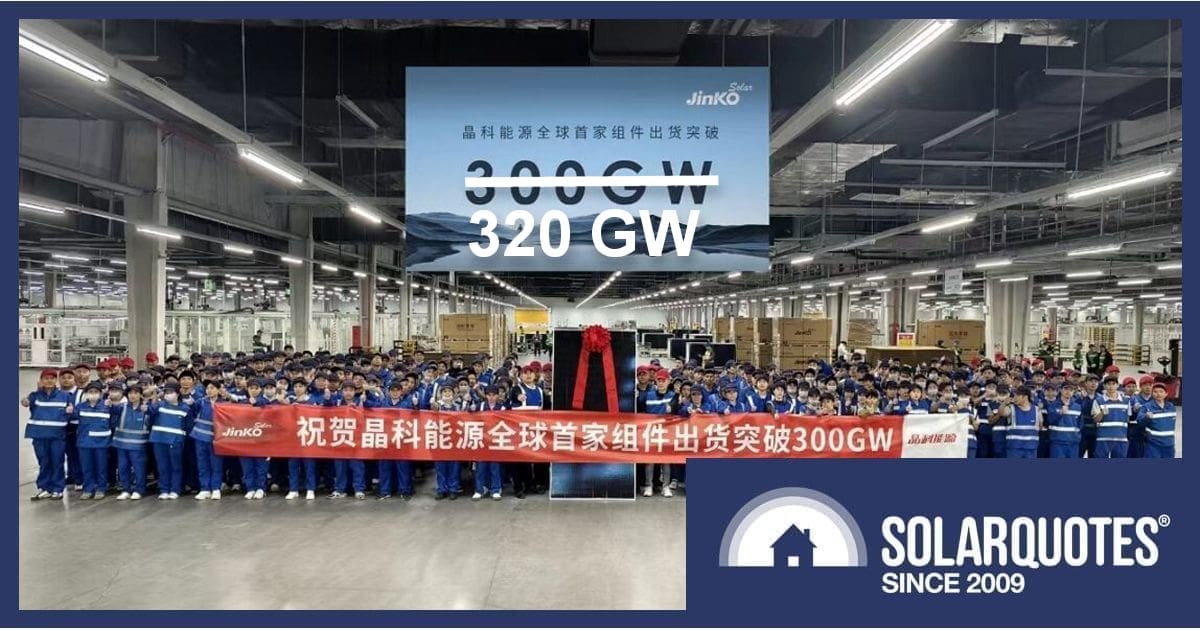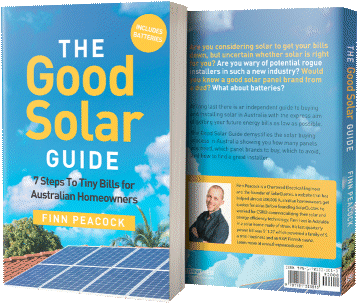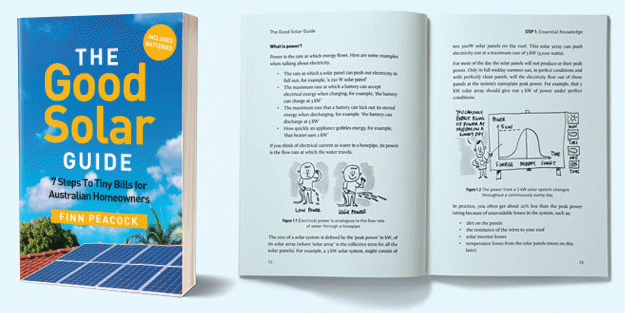
Chinese PV module and energy storage manufacturer JinkoSolar claims to have maintained its global lead in cumulative solar panel shipments and indicates its battery business is building.
In December last year, Jinko celebrated having shipped 300GW of solar panels since the company was founded. Last week, the firm the said it was first module manufacturer in the world to have delivered more than 320 GW of capacity.
JinkoSolar was founded in 2006 and started producing panels in 2009. It achieved 100GW of shipments in 2022 – 13 years later. The next 220GW has occurred in just 3 years.
Panel Shipments, Revenue Down
But the bigger picture painted for the first quarter of this year in terms of Jinko’s solar panels isn’t particularly rosy.
The 320GW milestone was announced along with the firm’s Q1 2025 financial results released last week that revealed, like many of its competitors, Jinko was struggling with trade policy and oversupply issues along with low solar panel prices.
According to SolarQuotes’ solar panel comparison table, estimated *retail* pricing in Australia for a 440W Jinko Solar Tiger Neo is just $125. While budget priced, Jinko solar panels are of good quality and the firm is currently an SQ recommended panel brand. The company also took out bronze for the best solar panels in 2025 in this year’s SolarQuotes Installers Choice Awards.
Jinko’s shipments for Q1 were 19,130 MW (17,504 MW for solar modules and 1,626 MW for cells and wafers), which was down 27.7% sequentially and 12.7% year-over-year. Total revenues for the quarter were US$1.91 billion, down 33.0% sequentially and 39.9% year-over-year.
“Prices across the main segments of the solar industrial chain were low in the first quarter,” said JinkoSolar Chairman and Chief Executive Officer Xiande Li. “This, combined with disruptions in demand caused by changes in international trade policies, pressured profit margins in each segment of the integrated solar supply chain.”
For the current quarter, Jinko expects its module shipments to be in the range of 20 GW to 25 GW and 85 GW to 100 GW for the full year – so we could see the 400GW milestone reached this year.
In terms of annual production capacity, the company expects that by the end of 2025 it will reach 120GW for monocrystalline wafers, 95GW for solar cells and 130MW for solar panels.
Perovskite Progress
Perovskite solar panels have been the next big thing for many years and we’ll probably see the first residential panels using tandem cells – silicon-based N-type monocrystalline TOPCon as the bottom cell, with a perovskite layer on top.
JinkoSolar is a major player in the perovskite research and development space. The company recently announced its laboratory efficiency for perovskite tandem solar cells has reached 34.22%, again setting a new record after achieving 33.84% conversion efficiency in January this year.
Battery Storage A Bright Spot
Shipments of JinkoSolar energy storage systems exceeded 300 MWh during the first quarter, in what Mr. Li said was a substantial year-over-year increase. The company expects battery storage shipments to be around 6 GWh for the full year 2025 and is focusing on the overseas market as the company’s strategic priority.
Jinko’s energy storage lineup features the SunGiga range for commercial and industrial applications (up to 100kW/215kWh per unit), and the Suntera (5.01MWh) for utility-scale purposes.
In terms of home batteries, JinkoSolar’s Suntank is available in Australia. This is a modular battery system using JKS-B51 modules that each have a usable capacity of 2.3kWh. Up to ten JKS-B51 modules can used in a single system for a maximum usable capacity of just over 23kWh. Inverter compatibility is limited to JinkoSolar’s hybrid inverter series and power output of a Suntank system with one or two battery modules is only 2.45kW, but that’s boosted to 5.63kW with three or more modules.
On a related note, if you’re considering residential energy storage options under the new federal government battery rebate program, we’ve just published an article on the best home battery buys this morning.

 RSS - Posts
RSS - Posts



If only they would start to manufacture and supply solar panels that are practical and efficient – 1m square.
I have Jinko 440W Tiger panels, on a system that replaced an older pair of systems, and, the Jinko 440W panels are less efficient than the previous 250W Hanhwa (?) 250W panels, due to the excessive physical size of the 440W panels, which are not designed for hip roofs.
And, because of the excessive physical size of the 440W panels, they are too close to a rooftop ducted evaporative air conditioning unit, whence the air conditioner serviceman told me on Monday, when he needed to service the air conditioner, that the panels are supposed to be at least 1m clear of the air conditioner unit, to allow for servicing of the air conditioner, and, the panels installation, does not provide that clearance, obstructing the servicing.
So, it is bad that the Jinko panels are so badly designed and impractical and inefficient, which they would not be, if they were 1m square.
Brett, I think your house roof is badly designed to make use of Solar panels regardless of their size, and the fact that you have an airconditioner blocking up valuable real/roof estate just adds to it. We should build roofs to suit economy of build and ease of panel fitment,..but unfortunately we also want a roof that looks cute rather than boxy.
Hi Tim,
This is one of my hobby horses and I’ve written about it here, a couple of times.
I’ve always thought there would be a great economic stimulus program in ripping whole roofs off houses, insulating them, (cladding & double glazing too?) then dropping simple new trusses with decent eaves and a solar power system to top it off.
If you saw the aerial view of our house, you would see that it is not a simple rectangle floorplan, and, is not a simple U-shape or H-shape floorplan.
It does have fibreglass batts insulation, but, like the normal, stupidly designed Australian house, has way too much glass, with seven foot by about eight foot windowing, facing northerly, and stupidly excessively oversized windows on other rooms, and, like most stupidly designed Australian houses, lacks adequate eaves, and, one wall with stupidly designed gutters, has no eave at all. The gutters and downpipes that were originally on the house, were designed to cause damage and be unsafe, and, in that, they were quite effective. Whilst I got the problem with the downpipes fixed, the guttering is still designed to cause harm and injury. Unfortunately, Australia does not have responsible building standards.
Housing design seems to be done in Australia, by five year old children playing jokes on people.
So, you are saying that houses should be torn down and rebuilt to suit solar panel manufacturers?
Hmmm.
You must be an MP or some other similarly affluent person.
The original part of the house was built in 1968, and the added on part was added in 1984.
Both, probably before the people who invented solar panels were born…
We bought the house in about 1994, before solar panels became mainstream.
Hi Bret,
Many houses are expected to undergo major maintenance and upgrades at about 30 year intervals. As we’ve written before, these renovations can be a good chance to do something that’s more functional than trendy.
It’s about rebuilding house to suit the people who live in them, rather than enduring an uncomfortable and expensive dwelling that primarily suits the builder who knocked it up for cheap in the first instance.